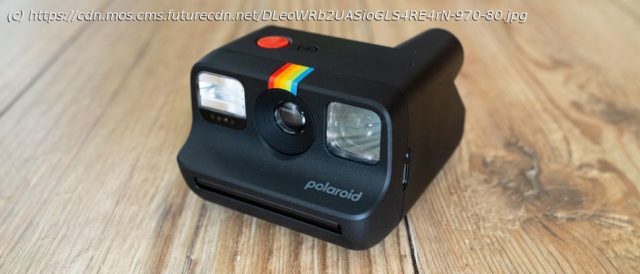Miniaturized analog photos almost in an instant
Two-minute review
I grew up being photographed with, and taking photographs with, Polaroid cameras, which were pretty much standard fare for family photography in the 1970s, 80s and 90s. The Polaroid Go 2 is based on the Polaroid 1000 Land Camera in terms of aesthetics, but with a modernized and miniaturized design. Due to its small size, basic-but-fun features and ease of use, it’s a contender for one of the best film cameras you can buy.
The last Polaroid camera I used and reviewed before the Go 2 was the Polaroid z340, which was released back in 2011. This was a digital camera that used a Zink printing system to produce prints with a printed rebate alongside digital image files, and while it was innovative, it lacked the charm and the quality of traditional analog Polaroid prints. The Go 2 rectifies this, taking us back to what makes Polaroid cameras so appealing: true instant analog photography.
The Polaroid Go 2 is available in multiple kits alongside accessories, with the standalone camera costing $80 / £80 / AU$90. You ultimately need some film to get started, so the Starter Set that includes the camera and a Film Double Pack (16 exposures) is potentially a better starting point, and costs $100 / £95 / AU$110. A Film Double Pack X2 (32 exposures) will set you back $40 / £20 / AU$50, and this is available with traditional white or stylish black rebates.Polaroid Go 2: design
The Go 2 is much smaller than the Polaroid 100 Land Camera it takes its design cues from, being palm-sized but with a much more rounded finish. It’s also available in black, white, blue, and red, so you can select the color you prefer. For me, the black finish looks best, contrasting nicely with the red shutter button and the Polaroid rainbow.
The camera is made using 30% recycled polycarbonate and ABS plastics, and the build quality feels good. There is some movement of the film door against its lock on the bottom of the camera when you’re holding it, but this doesn’t cause any issues. Loading the camera is incredibly easy, especially if you’ve used instant cameras in the past; if you haven’t, labelled film packs and the quick-start guide will guide you through the process.
The viewfinder is surprisingly reliable despite parallax error, which is the difference between what you see through the viewfinder and what the adjacent lens captures. One useful feature of the viewfinder is that the front is mirrored, so you can use it to help compose selfies, which can be taken using either the shutter button or the self-timer.






